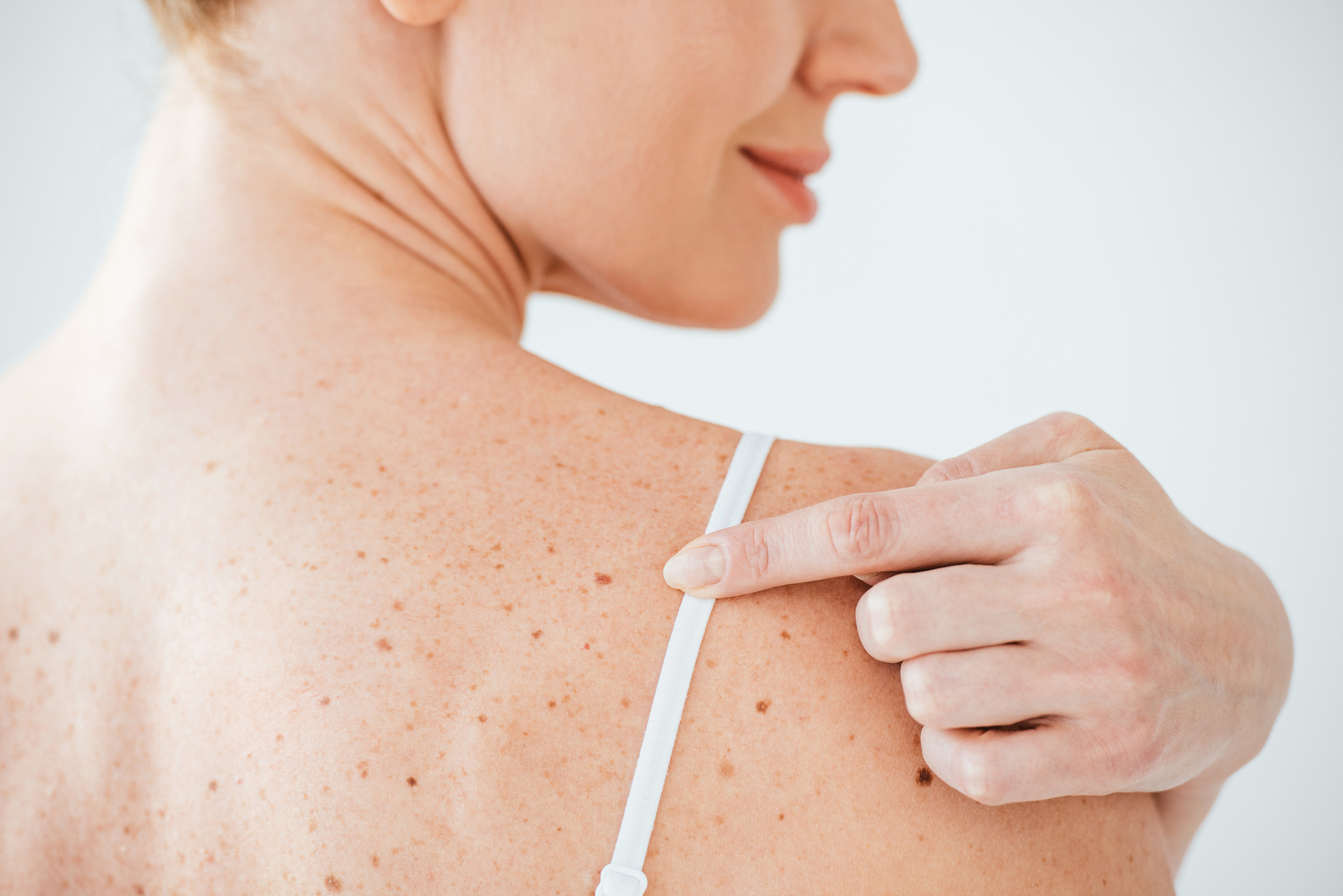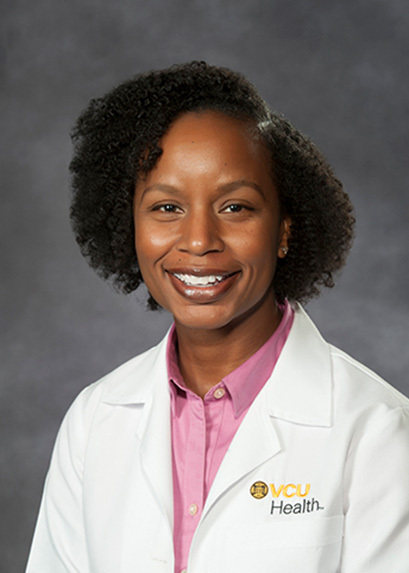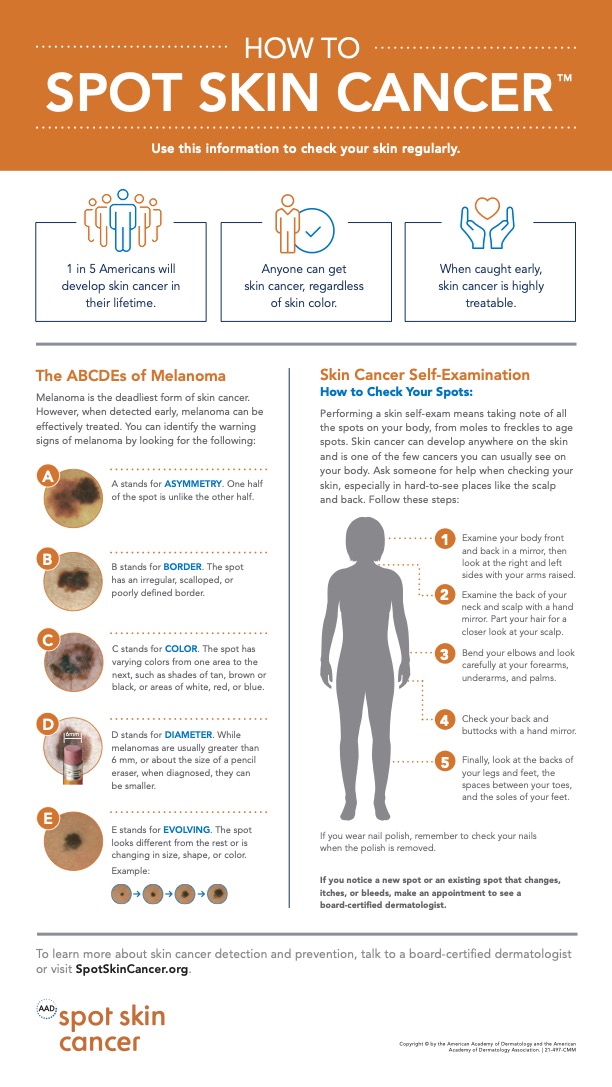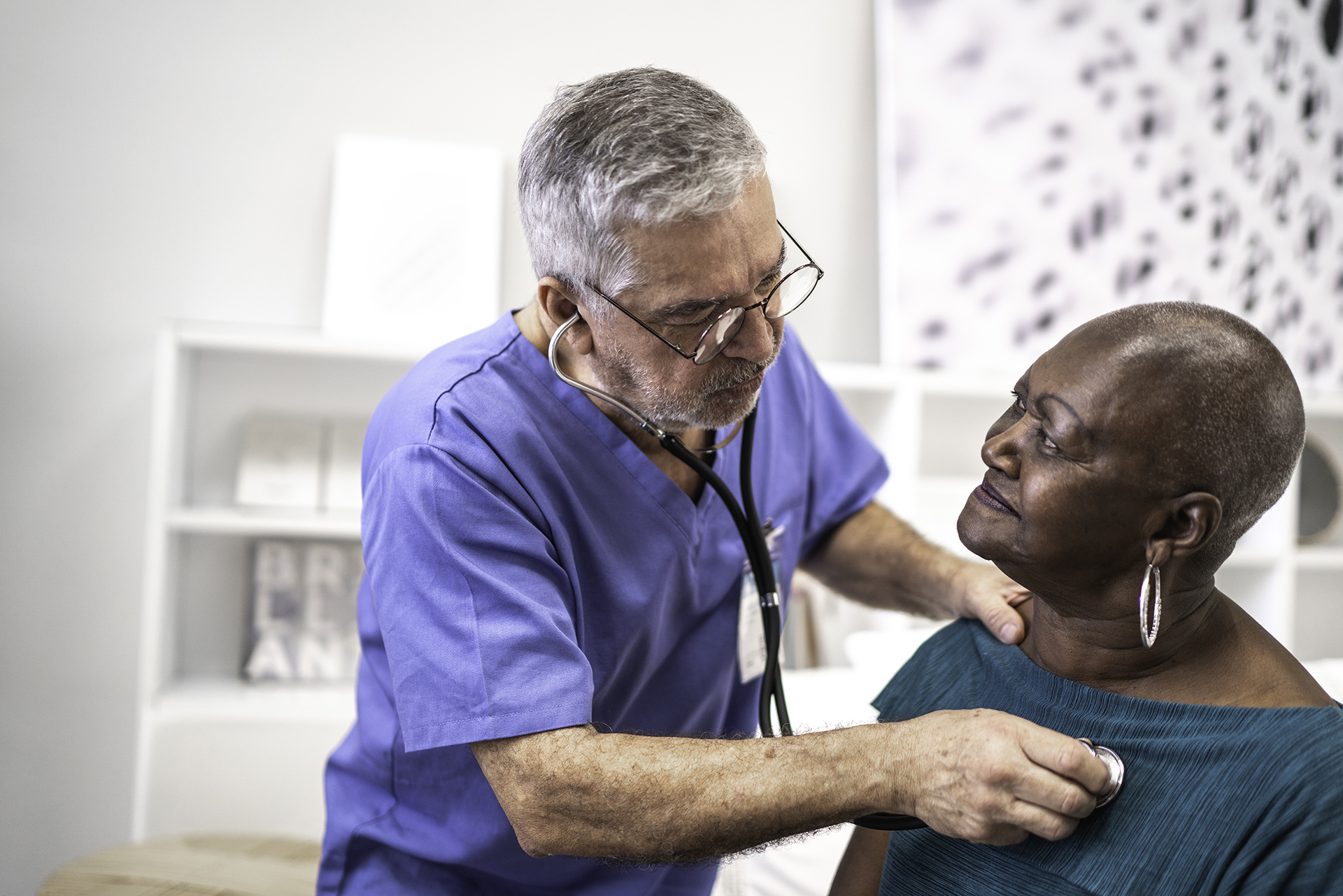Latest News
Prevention
Understanding skin cancer: Self-checks, prevention tips and treatment options at Massey
Jul 10, 2025

Skin cancer is the most common type of cancer. With one in five Americans being diagnosed in their lifetimes, everyone is at risk, and routine screening is essential to help catch the disease while it is still in its early stages.
While many people may only think of skin cancer during the summer, the sun poses a risk and causes skin damage year-round. With warmer months drawing more people outdoors, often with more exposed skin, it is crucial to stay vigilant for any changes in your skin and take the proper precautions to protect yourself.
 Pictured: Kimberly Salkey, M.D.
Pictured: Kimberly Salkey, M.D.
Performing self-examinations is one of many ways to keep your skin healthy. Kimberly Salkey, M.D., a dermatologist at VCU Massey Comprehensive Cancer Center and VCU Health, spoke to us about the importance of screening for skin cancer, how you can perform your own exams at home, and what treatments are available if you are diagnosed with skin cancer.
What are the common signs of skin cancer?
When examining your skin, be on the lookout for 3 things:
- Outlier lesions, anything different than any of your other spots
- Changes in your old spots, such as a mole or spot that’s been the same forever, and now it’s changed in size, shape or color.
- Sores that don’t heal. Normal skin ought to heal after a reasonable amount of time, but if something just keeps a scab on it and never completely heals, that deserves attention from the dermatologist.
Can you walk us through how to perform a self-exam?
Self-examination should be done about once a month. When you get out of the shower, before you get dressed, use a full-length mirror. Take a look at your face, your chest and the entire front of your body. Then you can have a seat and look at your feet, including between the toes and the bottoms of the feet. Then, use a hand mirror to look at the skin on your back. You don’t have to memorize every single spot, but you do want to have the gist, so that if something changes in a big way, it gets your attention. Some areas are more difficult to see, like behind the ears or on the scalp. When you get your haircut, remind your hairstylist to let you know if they see anything in those areas.
Are there any other hiding spots where things are often missed?
Places that people may not think about are the palms of the hands, soles of the feet and nails. I have patients who keep their nails painted all the time. When you go to the salon and the polish is off, take a look at your nails for any changes. Sometimes people don’t think to look all the way under the arm, and even in the genital area, so look at your groin too.
What is the difference between melanoma and other types of skin cancer?
The most common kind of skin cancer is basal cell carcinoma. Next is squamous cell carcinoma. And then melanoma is, fortunately, a distant third. The thing that makes melanoma different is that it has much more potential to spread throughout the body. Basal and squamous cell have some potential to do that, but they are very slow-growing and much less likely to spread. We think about basal cell as the shiny bump sometimes described as being translucent, which can almost look like a blister in its most classic form. Squamous cell is usually more scaly, kind of dry and usually red at the base.
A helpful tool to spot melanoma is the ABCDE rule:
- A stands for asymmetry; we want something to look the same on one side as on the other.
- B is for border, we like to see sharp borders instead of ones that have funny shapes or fade out at the edges.
- C is for color, we like to see one uniform color, not dark, light or red areas.
- D is for diameter. A normal mole is usually six millimeters or less. There are some rule breakers, like congenital nevi or moles you’re born with, but most moles are usually six millimeters, which is about the size of a pencil eraser.
- E is for evolution, so something that changes over time.
Does skin cancer appear differently in different skin tones?
Yes, and because it is sometimes less suspected or less noticeable in darker skin tones, these folks are often diagnosed with skin cancer at more advanced stages. Sometimes things like redness that you might see as part of a typical skin cancer are harder to pick up on darker skin tones. But it’s important to know that everyone is at risk for skin cancer.
Do you have any tips on how to keep track of the evolution?
We use photographs a lot in our clinic. I encourage patients to do that at home. Take a picture of a lesion and then come back and check it. Usually, monthly is enough.
If someone is diagnosed with skin cancer, what are their treatment options at Massey?
Skin cancer is highly treatable. And the most common kinds, basal cell and squamous cell, are highly curable. And so is melanoma when it’s detected early. Many patients have surgery to cut around it, remove the cancer and put some stitches in. Some of the earlier stages, especially of basal and squamous cell carcinomas, can even be treated with topical medication like a cream or by scraping away at the surface of the skin, without requiring any cutting or stitches.
Are there any extra steps people can take to protect themselves from the sun in the summer?
Be aware of how much skin is exposed and make sure that you’re using sunscreen. Avoid direct sun exposure between peak hours, from 10 a.m. to 4 p.m. That doesn’t mean you can’t go outside during that time, but be in the shade as much as you can. Use sunscreen with an SPF of at least 30. If you want to get the best benefit from it, reapply every two hours. And if you’re using spray sunscreen, be sure to rub it in.
Another option is sun protective clothing. If you have the right garments that have a UPF rating, then you can use those. But the best sun protection is all of the above: sunscreen, sun protective clothing, hats, sunglasses, all of it.
Does skin tone make a difference in how vulnerable you are to skin cancer?
Everyone is at risk for skin cancer. Sunscreen is for everybody every single day. People of color get much less skin cancer compared to their white counterparts, but they still get it, so sun protection is important. Another thing I emphasize to my patients is even if they’re not worried about skin cancer, other things like discoloration are a really common concern in people with darker skin tones, and the sun just makes brown spots browner. Also, there are signs of photoaging. Those fine lines and wrinkles may not happen as much in skin of color, but they do happen. So, using sunscreen can help protect against other things in addition to skin cancer.
If you are diagnosed with skin cancer, VCU Massey has a number of resources, including an award-winning medical team, high-quality treatment options, innovative clinical trials and a full range of support services and patient care. Learn more about VCU Massey’s approach to skin cancer, browse providers and find skin cancer treatment near you here.
Written by: Tatiana Del Valle
Download our helpful guide on how to spot skin cancer. Visit the American Academy of Dermatology Association for more information.

Related News
Clinical Care, Prevention
VCU Massey now offers new technology for early detection of lymphedemaDec 8, 2025
Prevention
Smoking cessation: Why it’s important, the benefits of quitting, and where to beginNov 20, 2025

Get access to new, innovative care
Treatments in clinical trials may be more effective or have fewer side effects than the treatments that are currently available. With more than 200 studies for multiple types of cancers and cancer prevention, Massey supports a wide array of clinical trials.

Find a provider
Massey supports hundreds of top cancer specialists serving the needs of our patients. Massey’s medical team provides a wealth of expertise in cancer diagnosis, treatment, prevention and symptom management.
